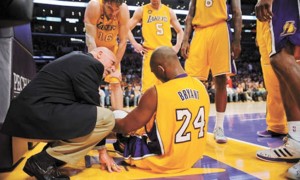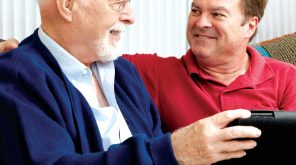By Matthew Stiebel, MD, FRCSC –
 From the dawn of the written era, man has known about the devastating weakness at the base of the calf muscles. The confluence of the gastrocs and the soleus muscles becomes the tendinous attachment on the calcaneus (heel bone) known as the Achilles tendon. This tendon is responsible for transmitting the entire force generated by the calf muscles into propelling the foot into plantarflexion (downwards towards the ground.) The Achilles tendon sees thousands of Newtons of force every time we run, jump or push off with our feet. Without this awesome connection of muscle to bone, we would be left without the ability to ambulate as we know it.
From the dawn of the written era, man has known about the devastating weakness at the base of the calf muscles. The confluence of the gastrocs and the soleus muscles becomes the tendinous attachment on the calcaneus (heel bone) known as the Achilles tendon. This tendon is responsible for transmitting the entire force generated by the calf muscles into propelling the foot into plantarflexion (downwards towards the ground.) The Achilles tendon sees thousands of Newtons of force every time we run, jump or push off with our feet. Without this awesome connection of muscle to bone, we would be left without the ability to ambulate as we know it.
For a structure so vitally important to our survival (think hunter and gatherer here- or running from giants wielding axes in battle) why then is the Achilles tendon is so poorly supplied with blood? Our blood is the life force by which our bodies repair themselves after injury. If parts of our bodies are damaged, blood flows to the area bringing new cells, nutrition and necessary growth factors for repair. Our muscles are very vascular, they “swell” with blood when we ‘work out’ so that oxygen can feed the stressed tissue and nutrients arrive to fix the damaged strands. Basically, our muscles are set up to repair themselves and grow exceptionally well. (A solid engineering design.) Why then are our tendons not privy to such an excellent strategy? The Achilles has a flimsy sheath around it known as the paratenon—and that’s basically its only blood supply—compared to the muscles it is almost an afterthought: ridiculous really.
As we age (despite the fact that we live longer and look younger) our tendons take chronic repetitive damage and cannot repair themselves as our muscles do. This means that eventually the tendons break. Case in point the illustrious (and occasionally sexually infamous and sociopathic) Kobe Bryant. While still a ‘young man’ to many (frankly his interviews are still downright juvenile) the mid 30’s are typically the end of a professional athlete’s career. Why you ask? Because the body fails to repair the tendons at the same rate that the muscles can be forgiven. Others have fallen before him: Patrick Ewing, Shaquille O’neil, and Isaiah Thomas to name but a few. The results of repair of the torn Achilles are, however, typically poor for athletes of this caliber. This is what the Greeks knew about the great Achilles, and this is what the NBA knows about the Black Mamba. Until we can figure out how to turn the clock back on tendon damage (and a few sutures holding the repair together are not the answer) then all quick slashing athletes will know their mortality when faced with tendon damage. To conclude, this is tough news for those fans of the mighty Lakers, but then again we live in south Florida…. Long live the Heat….
Palm Beach Sports Medicine
(561) 845-6000
www.pbsportsmed.com
Check Also
RejuvaNATION MedSpa: Elevating Men’s Health to New Heights
Embark on a Journey to Revitalize Your Vitality Rediscover the joy of a spontaneous sex …
 South Florida Health and Wellness Magazine Health and Wellness Articles
South Florida Health and Wellness Magazine Health and Wellness Articles




